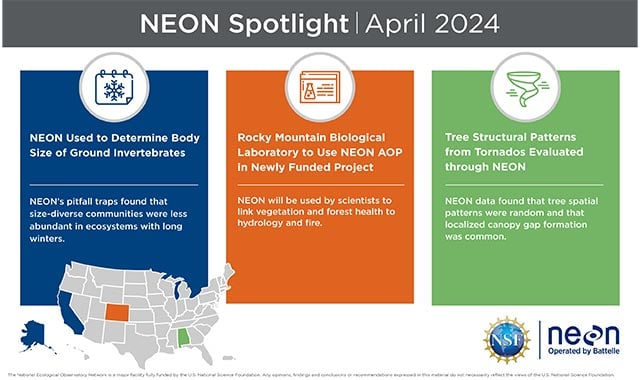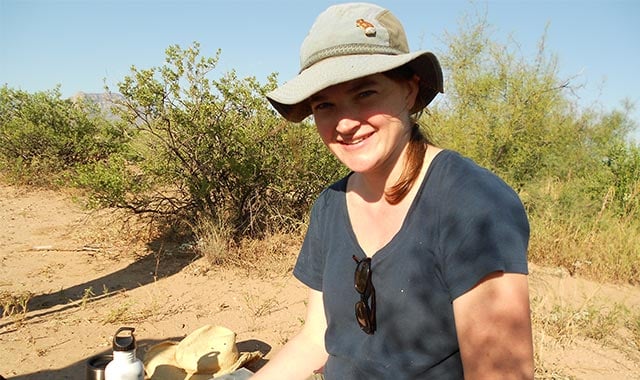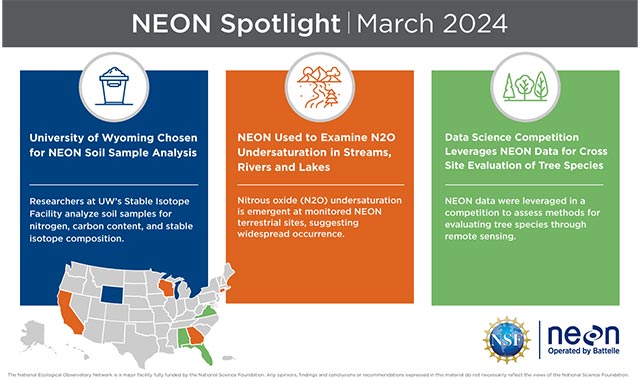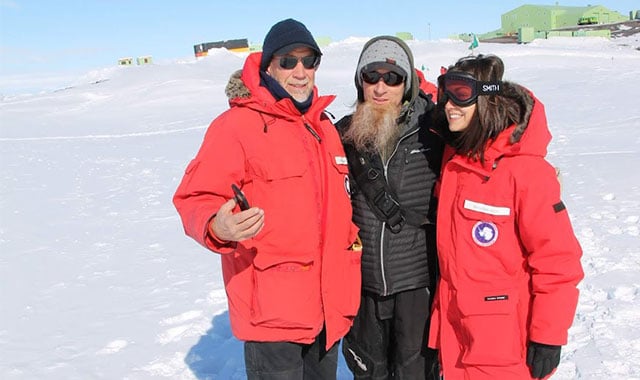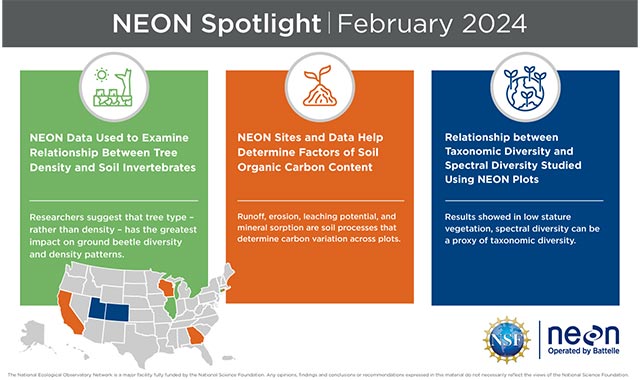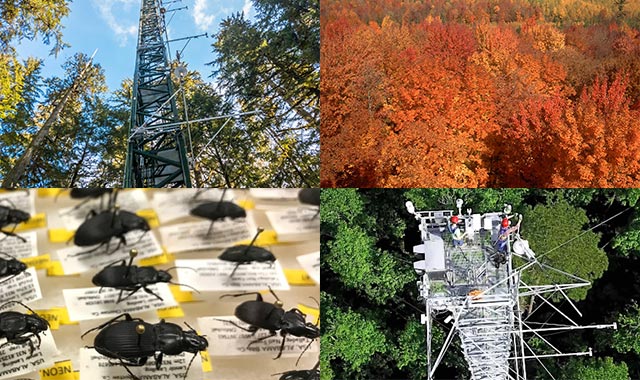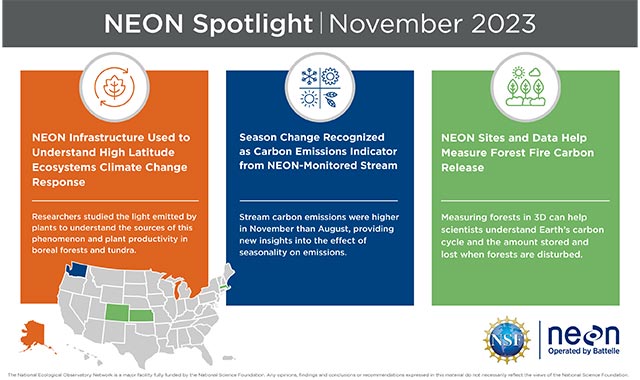December 2021: What’s New with NEON?
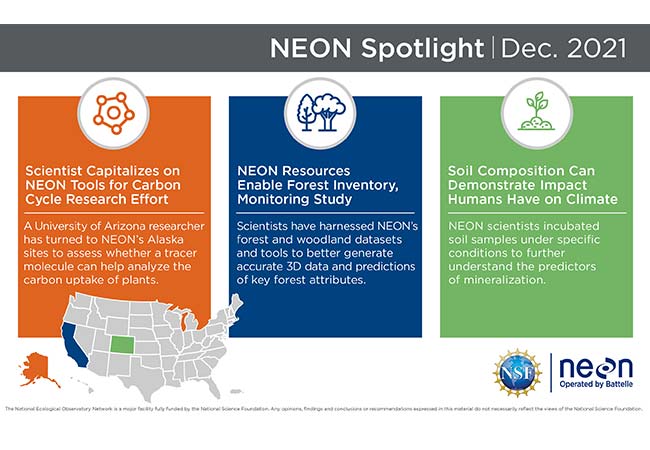
For our December edition, we’re continuing to highlight the multitude of ways NEON data is pushing the boundaries of current ecological research. This month’s collection of scientific advances explores how a tracer molecule can help explain carbon’s movement between soil and the atmosphere, a cost-effective alternative to lidar for forest modeling, and how a novel numerical simulation–environmental response function can optimize observing system designs.
This Month’s Spotlight
The latest news from NEON includes:
- University of Arizona researcher Dr. Laura Meredith is studying how carbon moves between soil and the atmosphere, including the influences of plant, fungal, and microbial communities at NEON field sites in Alaska. Meredith is working to validate the use of carbonyl sulfide (OCS) as a tracer molecule to better estimate the amount of carbon absorbed by plants. Her study was made possible through the NEON Assignable Assets Program and an NSF award. "It's important to be able to break this out because we can't be confident that climate change will affect photosynthesis and respiration in the same way, which could create an imbalance in the system,” said Meredith. “To build better models, we need to be able to resolve and study these two processes independently. The balance between the two is critical to understanding how much carbon is kept in the ground versus how much is released into the atmosphere."
- A recent study on forest modeling and predictions discovered that a combination of unpiloted aerial systems (UAS), digital aerial photogrammetry (DAP), and high precision global positioning systems (HPGPS) provide a low-cost 3D modeling alternative to lidar. While the California-based study validated that lidar provides the most accurate 3D data and predictions, these other technologies—when used together—were able to accurately predict key forest attributes across a range of forest types, canopy densities, and structural conditions, while reducing costs. The study used lidar data collected by the NEON Airborne Observation Platform.
- A series of recently published experiments demonstrates how a novel numerical simulation–environmental response function (NS–ERF) approach doubled the potential to explore energy balance closure and spatial patterning science objectives while substantially simplifying logistics for the Chequamegon Heterogeneous Ecosystem Energy-balance Study Enabled by a High-density Extensive Array of Detectors 2019 (CHEESEHEAD19). Owing to its modular extensibility, NS–ERF lends itself to optimizing observing system designs for natural climate solutions, emission inventory validation, urban air quality, industry leak detection, and multi-species applications, among other use cases. The study is based upon work supported by NEON and presented at the 2019 American Geophysical Union Fall Meeting.
Sponsored by the National Science Foundation (NSF) and operated by Battelle, NEON is a continental-scale ecological observatory network dedicated to providing high-quality, consistently generated, standardized data that is free and available to all users. By enabling scientists, researchers, and students to address critical questions and understand ecosystem changes over time, the NEON program allows the ecological community to tackle questions and problems at a scale that was not possible before.
You can read about the latest work and research in the NEON Spotlight every month at Inside Battelle, and on our social media channels. For more information about NEON, visit NEONscience.org.
Related Blogs
BATTELLE UPDATES
Receive updates from Battelle for an all-access pass to the incredible work of Battelle researchers.
